Get Back to It
Sprained ankle? Tennis elbow? Torn ACL? At the Emory Sports Medicine Complex, you can go where the pros go.
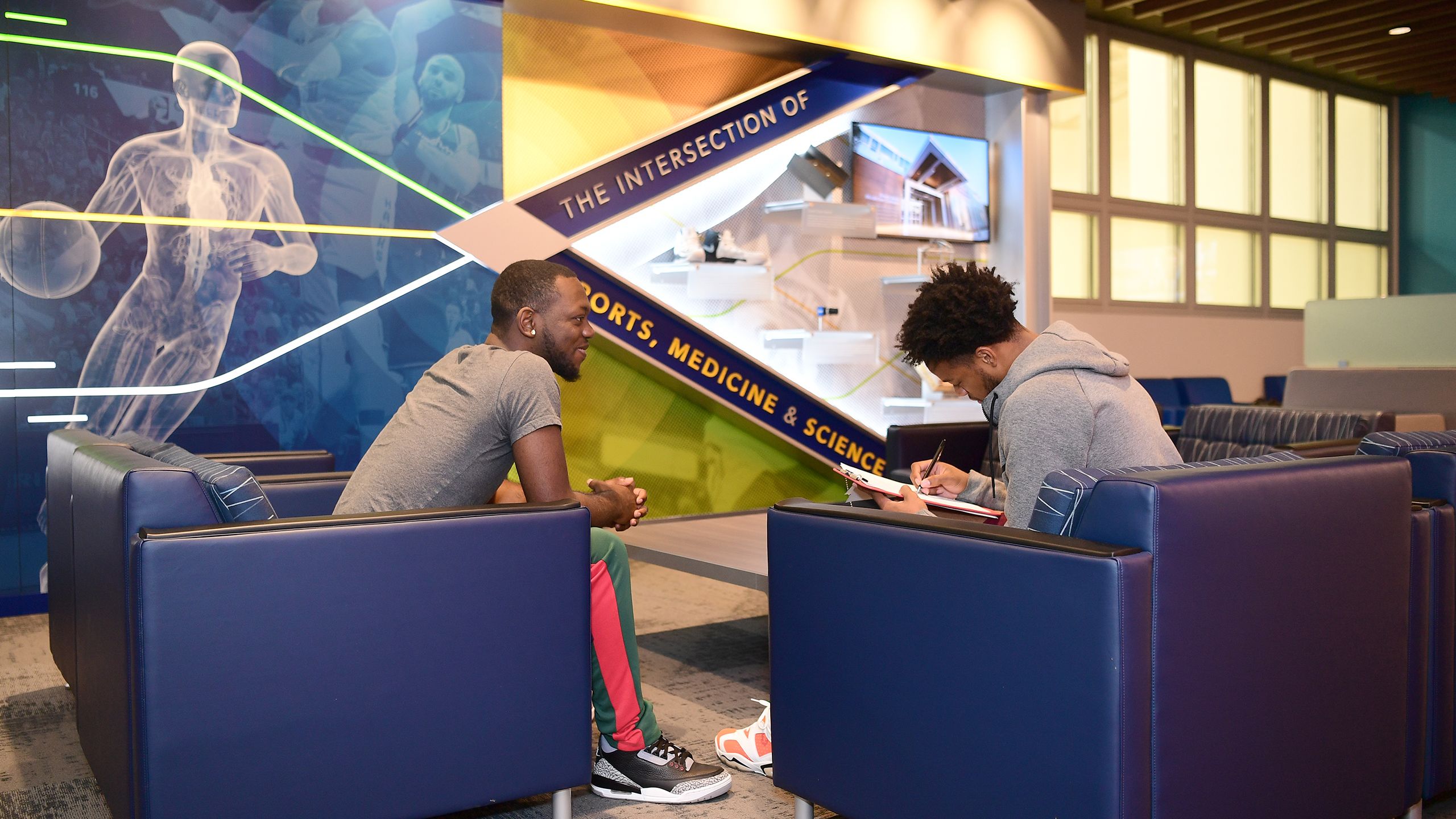
“First I got five stitches in my chin, then I busted my collarbone. My mom asked me if I was going to quit now. I said, well, maybe in a few years...”
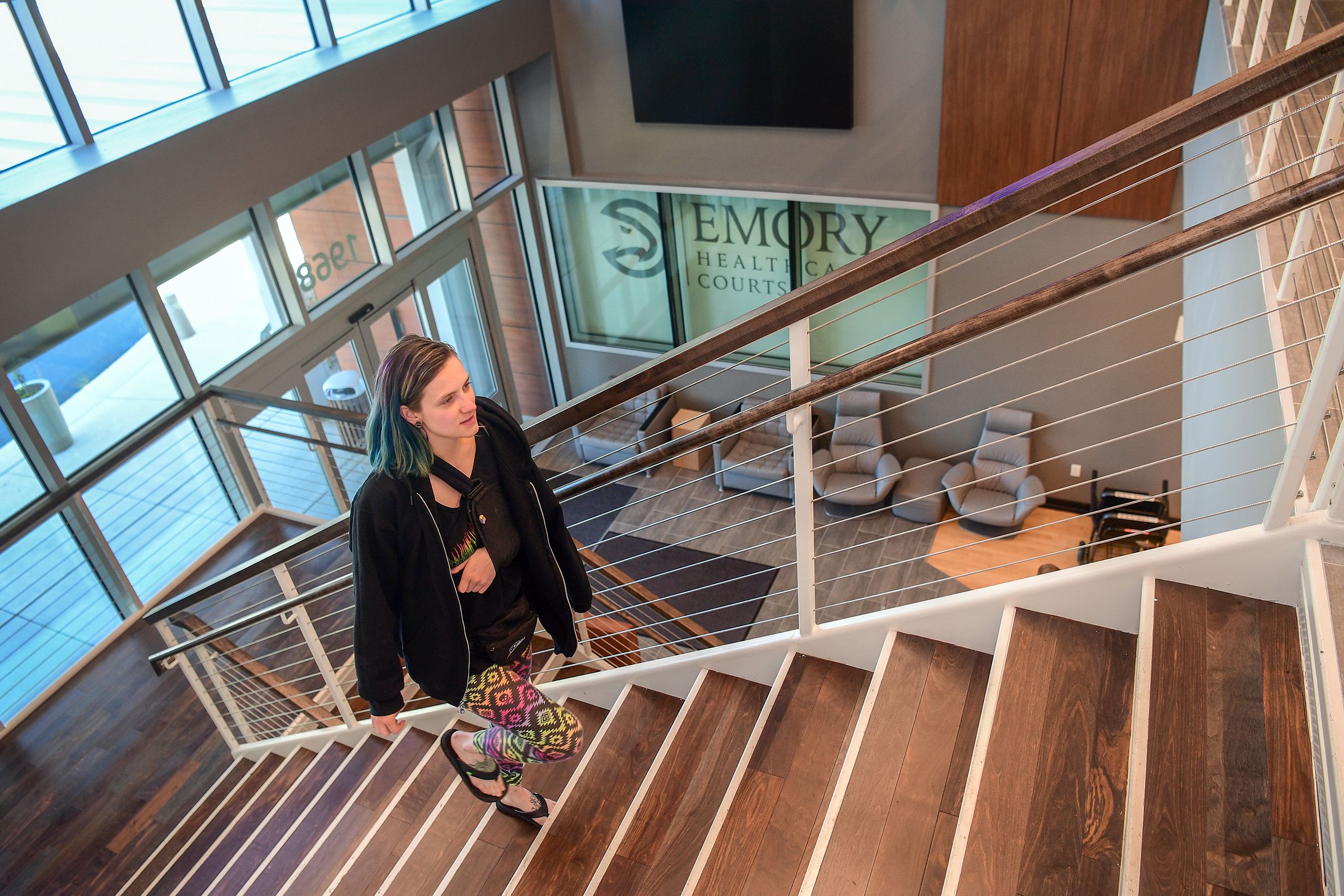
ATLANTA ROLLERGIRL Penelope Kelley-Harrell (aka Master Blazer) admits that being in a competitive roller derby league—the ATL Rumble Bs—can be a bit hazardous.
When the 22-year-old broke her collarbone while skating, she came to Emory Sports Medicine Center to see a specialist.
The full-contact sport is intense but exhilarating, she says. “I just want to get back out there.”
The Emory Sports Medicine Complex is the first of its kind, a unique partnership between the Atlanta Hawks Basketball Club and Emory Healthcare.
Set on a five-acre campus in Executive Park in Brookhaven, the 90,000-square-foot complex is the new home of the Emory Sports Medicine Center and Emory Physical Therapy, as well as the Hawks’ front office and training and practice facility. The $50 million, privately funded facility is the first training site in the NBA to be located next to a sports medicine center that offers players immediate treatment. The medical center is also open to the public.
“Emory Healthcare has built outstanding orthopedics services over the past decade, and we are excited to continue to grow this area,” says Jonathan Lewin, president, CEO, and chair of the board of Emory Healthcare. “Delivering on-site care not only will enable us to provide faster care to Hawks players but also will enhance our ability to conduct sports performance research and translate what we learn to all athletes, both professional and recreational.”
Emory Healthcare is the official team healthcare provider of the Atlanta Hawks, Atlanta Braves, Atlanta Falcons and Atlanta Dream, and takes care of athletes at Georgia Tech, Emory University, and more than 20 metro Atlanta high school athletics programs

“I like to help people get back to their sports and activities they love... It’s very important to them and because of that it’s important to me.”
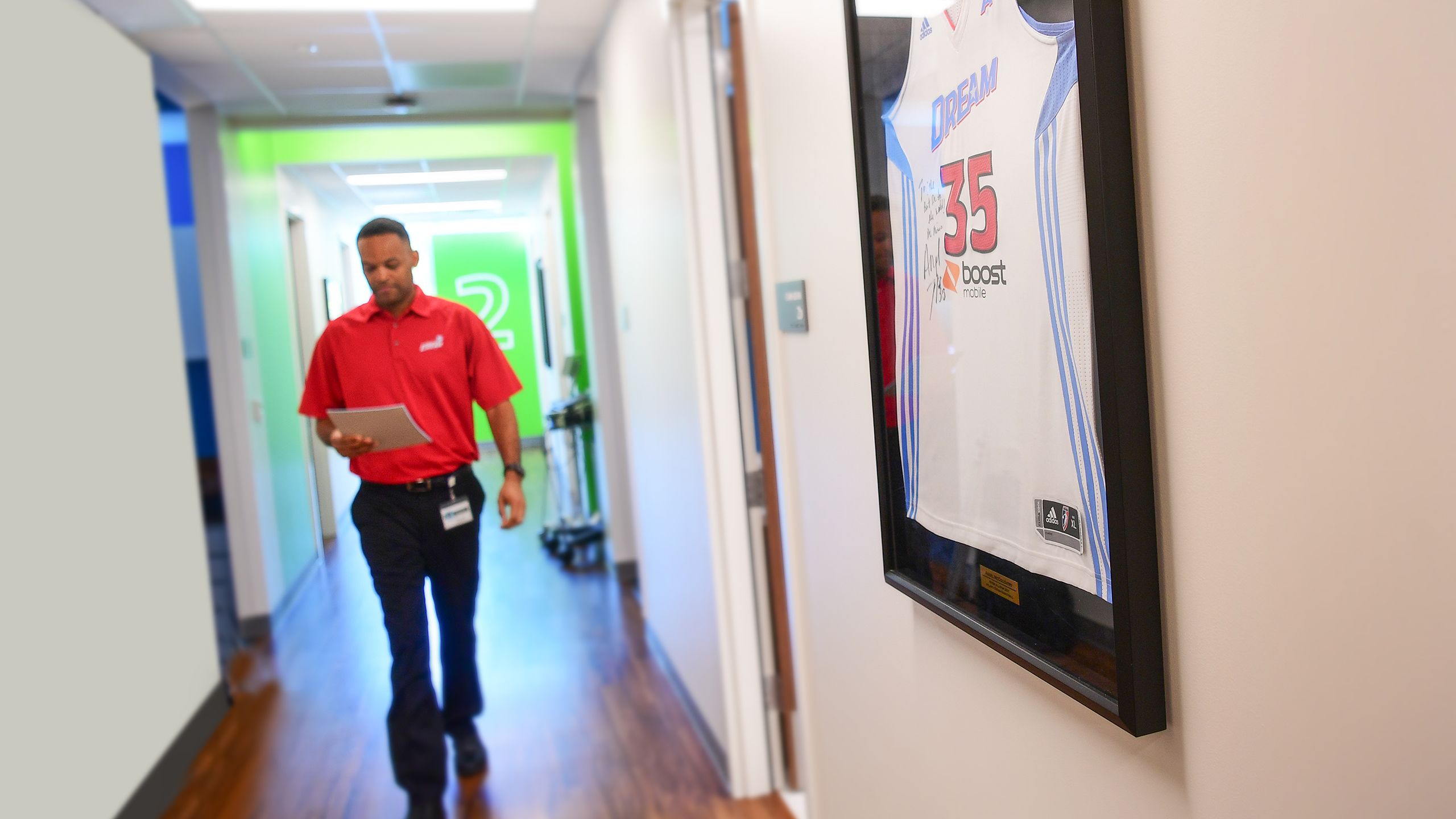
Sports medicine physician Brandon Mines has focused his clinical interests on sports injuries and conditions of the shoulder, elbow, wrist/hand, knee, foot, and ankle.
Mines works with the Atlanta Rollergirls and is head team physician for the Atlanta Dream, a team physician for the Atlanta Falcons, and a rotational physician for U.S. soccer teams and many high school athletes.
He sees general patients as well, ranging from those who have sprained their ankles hiking to seniors experiencing “tennis elbow” after decades of ALTA play.
“I chose sports medicine because it really does encompass patients who are excited about exercising and staying fit,” Mines says. “I like to help people get back to the sports and activities they love after they have an injury. It’s very important to them, and because of that it’s important to me.”
“We use our backgrounds in sports science along with sophisticated technologies to give competitive advantages to athletes.”
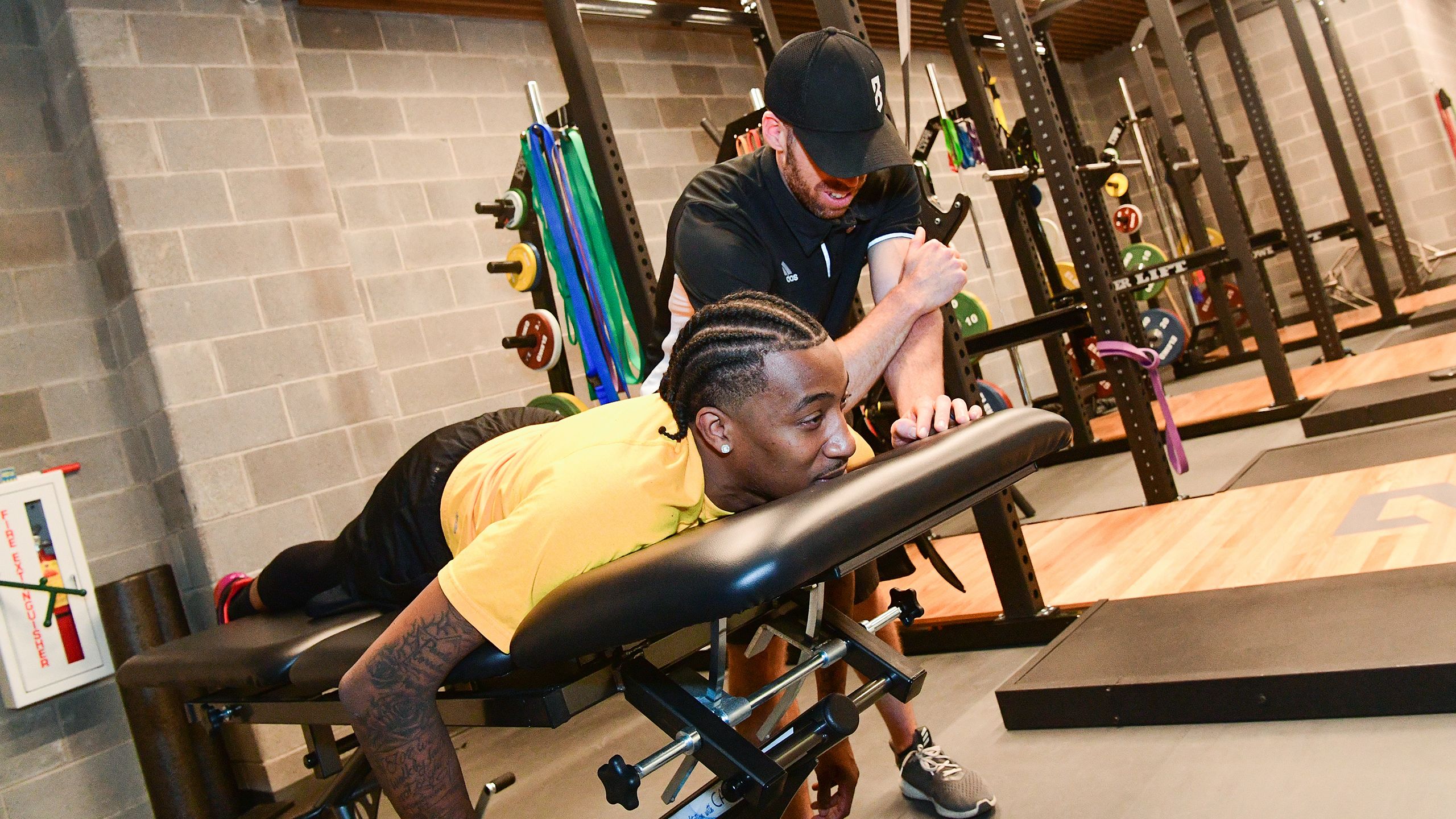
The complex includes the East Coast headquarters for the P3 Peak Performance Project, a training and conditioning program for elite athletes.
“Age-old thinking is that success in athletics is determined by genetics, natural ability, sport-specific skill, and a strong work ethic” says physician Marcus Elliott, founder and director of P3 Applied Sports Science, based in Santa Cruz, California. “Current training programs offer a ‘one size fits all’ cookie-cutter approach, which typically includes weight lifting plus maybe some plyometrics and sprints. The paradigm has shifted.”
Competitive athletes now need to possess power, strength, mobility, and flexibility, says Elliott, as well as other abilities tailored to the specific needs of their sport and position.
P3 integrates sports science, research, and biomechanical technology to assess an athlete’s movement and performance and prescribe a personal optimization plan.
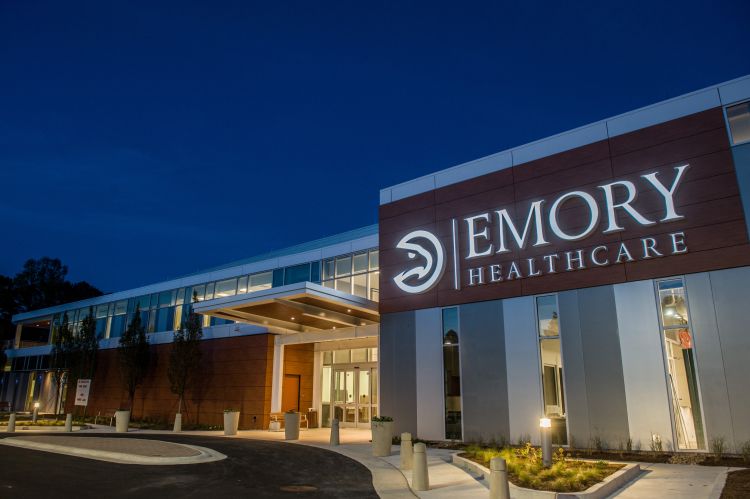
The Emory Sports Medicine Complex has a team of specialists on hand to treat everyone from pro athletes to weekend warriors.
The Emory Sports Medicine Complex has a team of specialists on hand to treat everyone from pro athletes to weekend warriors.
If an Atlanta Hawks player gets injured at practice, he can walk right across the hall to the Emory Sports Medicine Center.
The medical team includes orthopedic surgeons, sports cardiologists, physical therapists, and other specialists.
“We are thrilled with this partnership forged with Emory in developing a new facility that will revolutionize how other NBA teams approach integrating sports medical technology within their own basketball training centers,” says Atlanta Hawks principal owner Tony Ressler. “And we are proud that this facility will go beyond benefitting just our players and will also be a valuable sports medicine resource available to the entire community.”
Atlanta Hawks players see the Emory Sports Medicine Complex for the first time. Here's how they reacted.
When Atlanta Hawks players saw their new practice facility and its amenities for the first time, their responses were glowing: “Oh my goodness.” “I don’t think I’m ever going to leave.” “A dream come true for a player.”
“Having a year under my belt, and seeing a lot of facilities around the world, I really feel like this is the best,” says Hawks forward Taurean Prince. “From the courts, to the training room, to the kitchen, to the locker room, it’s first class. As players, we are appreciative and we don’t take it for granted.”
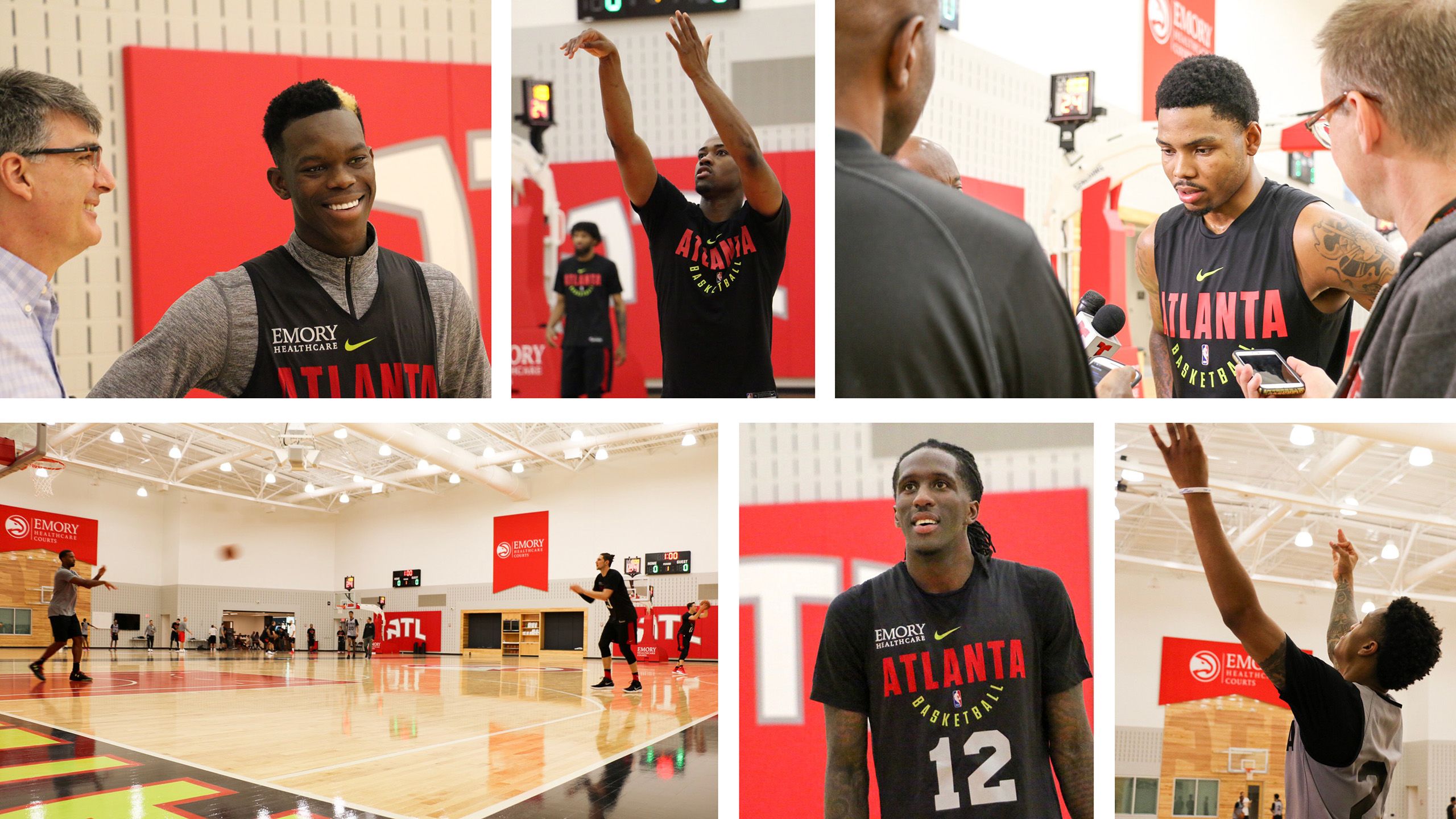
The Emory Healthcare Courts are visible from the sports medicine waiting room. To maintain privacy, however, tinted shading will be activated when Hawks players are having an official practice—so as not to give away game strategies.
From the courts, players have direct access to training areas, a film room, and a recovery area including cryotherapy, sensory deprivation tanks, and in-ground hydrotherapy.
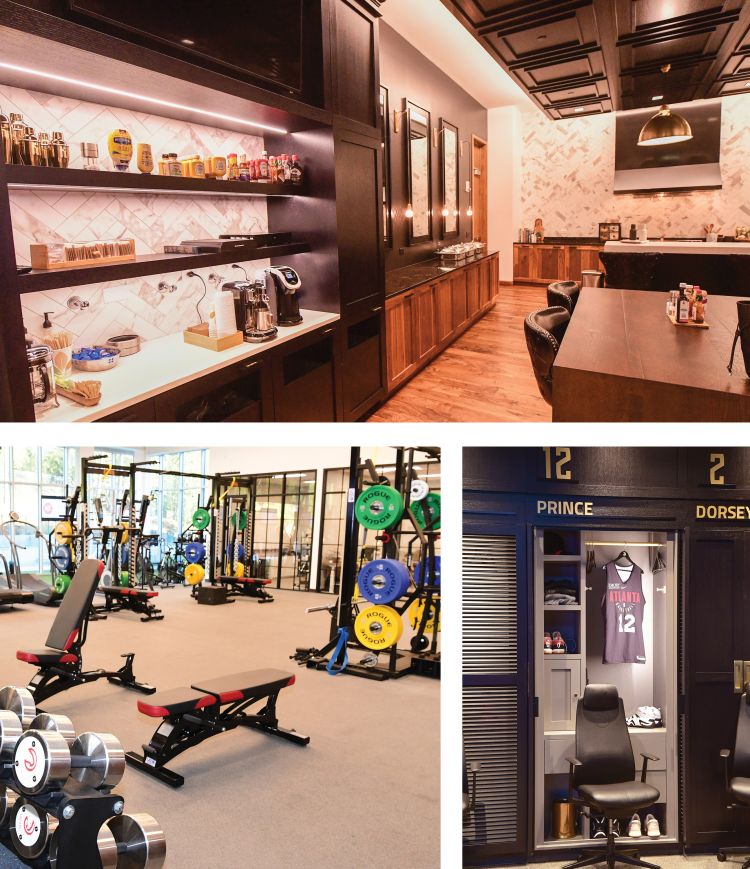
The Atlanta Hawks training and practice facility includes a weight and exercise room, a gourmet kitchen with customized meal plans, and a deluxe locker room.
The Atlanta Hawks training and practice facility includes a weight and exercise room, a gourmet kitchen with customized meal plans, and a deluxe locker room.
The Hawks’ side of the complex includes the team’s front office, the training courts, a gourmet kitchen featuring customized meal plans, a smoothie station, common areas to hang out and socialize, oversized exercise equipment, deluxe locker room (as well as individual shoe closets), an outdoor pool, and a whirlpool.
“Our collective goal was to design a facility that could fully service the top athletes in the world, provide the absolute best environment for comprehensive player development, and serve as a sports science and research mecca,” says Scott Boden, vice president for business innovation for Emory Healthcare and director of Emory Orthopaedics and Spine Hospital. “That vision has become a reality.”
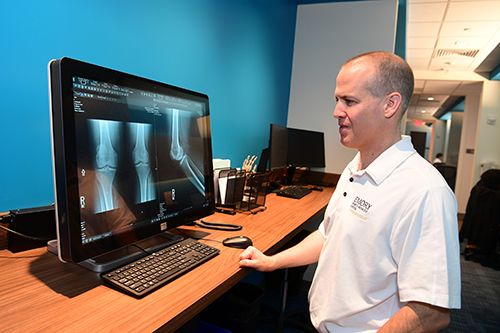
Emory Sports Medicine physician Kenneth Mautner reviews patients X-rays.
Emory Sports Medicine physician Kenneth Mautner reviews patients X-rays.
In high school, sports medicine physician Ken Mautner was a swimmer and tennis player. “I always wanted to work with athletes when I got older,” he says. “I love the competitive fire, the dedication people have for sports.”
Mautner specializes in non-surgical interventions for athletes of all ages and abilities. “It’s rewarding when people have been having problems for a long time and we can facilitate their rehabilitation, do a procedure, and get them back to playing the sport they enjoy.”
The Emory Sports Medicine Center has advanced diagnostic and treatment technologies on site, including a 3 Tesla MRI scanner, 3-D motion capture analysis, and blood/sweat testing and analysis.
The most common sports injuries include: ACL tears and other knee injuries, shoulder problems and rotator cuff tears, hamstring pulls, foot and ankle injuries, concussions, and hand, wrist, and elbow injuries. Some injuries are acute, such as tears, breaks, or sprains, and others are chronic, from wear or repetitive stress.
“If all goes well, I can be back out on the (soccer) field in six months.”
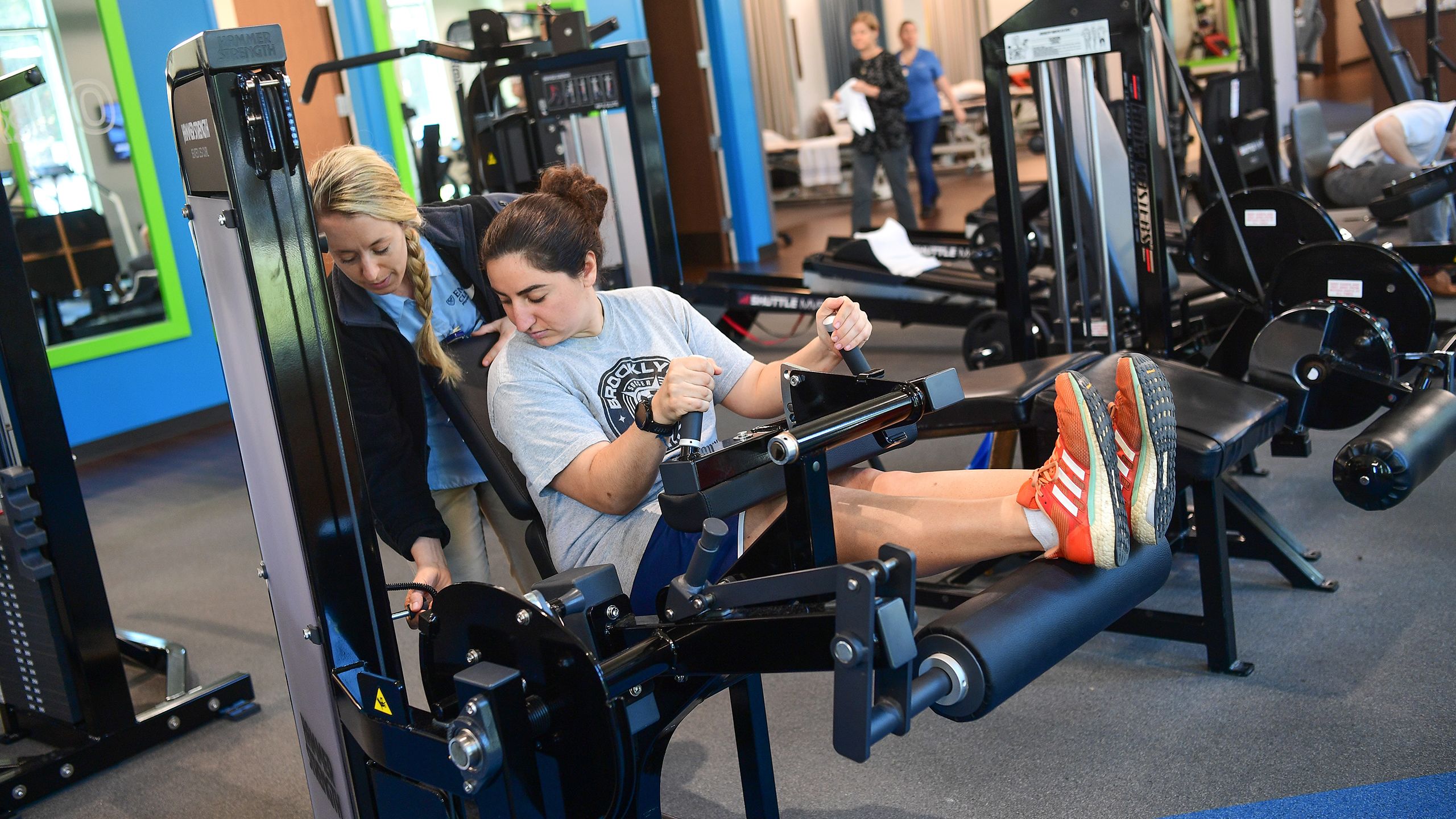
Lena Weiss is recovering from ACL surgery after a tear while playing soccer. Her physical therapist, Emily Bolthouse, coaxes her to do more leg lifts.
Weiss, who plays in a Georgia recreational women’s soccer league, has physical therapy at the complex two times a week for an hour.
Rehabilitative therapy is a vital part of recovering from sports injuries or surgery, to regain as much function as possible.
Emory Physical Therapy has clinical specialists in orthopedics and sports medicine, as well as intramuscular and manual therapists, Pilates specialists, strength and condition specialists, and therapists who specialize in mechanical diagnosis and treatment of the spine.
“If all goes well, I can be back out on the field in six months,” says Weiss.
And that is what it’s all about.


